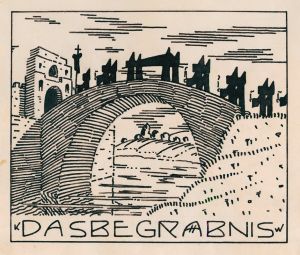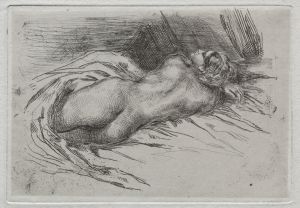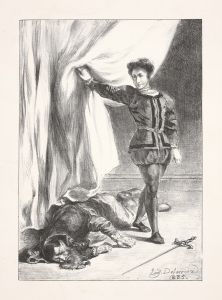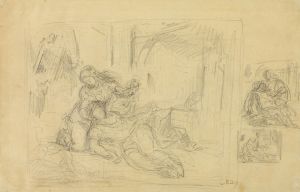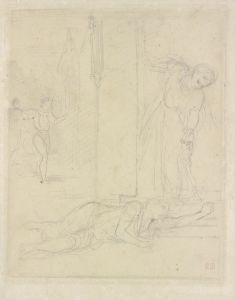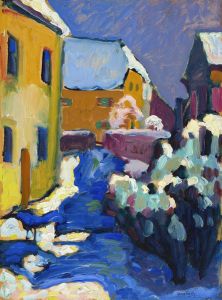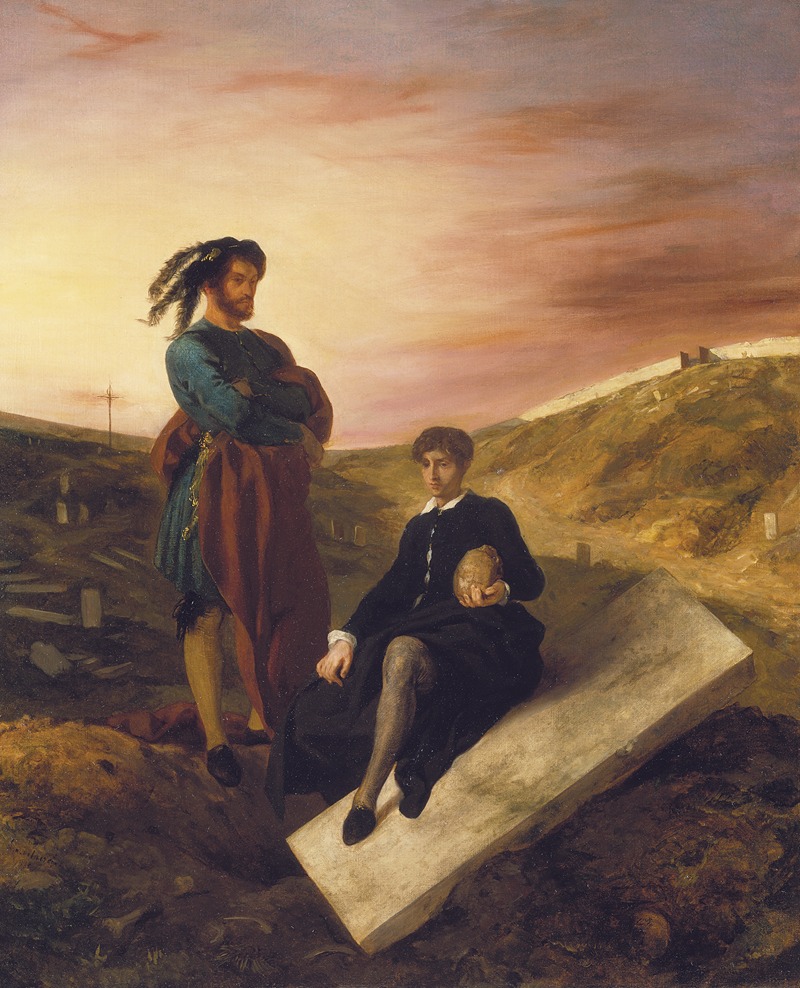
Hamlet and Horatio at the Cemetery
A hand-painted replica of Eugène Delacroix’s masterpiece Hamlet and Horatio at the Cemetery, meticulously crafted by professional artists to capture the true essence of the original. Each piece is created with museum-quality canvas and rare mineral pigments, carefully painted by experienced artists with delicate brushstrokes and rich, layered colors to perfectly recreate the texture of the original artwork. Unlike machine-printed reproductions, this hand-painted version brings the painting to life, infused with the artist’s emotions and skill in every stroke. Whether for personal collection or home decoration, it instantly elevates the artistic atmosphere of any space.
"Hamlet and Horatio at the Cemetery" is a painting by the renowned French Romantic artist Eugène Delacroix. Created in 1839, this work is a vivid representation of a scene from William Shakespeare's tragedy "Hamlet." Delacroix, known for his dynamic compositions and expressive use of color, captures the somber and contemplative mood of the play's graveyard scene.
The painting depicts the moment in Act V, Scene I, where Prince Hamlet and his loyal friend Horatio find themselves in a cemetery, encountering the gravediggers at work. This scene is pivotal in the play, as it is here that Hamlet reflects on the nature of mortality and the inevitable fate that awaits all humans, regardless of their status in life. Delacroix's interpretation of this moment is both dramatic and introspective, highlighting the existential themes that are central to Shakespeare's work.
In the composition, Delacroix places Hamlet and Horatio in the foreground, with the gravediggers visible in the background. Hamlet is shown holding the skull of Yorick, the king's jester, which prompts his famous soliloquy beginning with "Alas, poor Yorick! I knew him, Horatio." This moment is crucial as it underscores Hamlet's deepening philosophical inquiry into life and death. Delacroix's portrayal of Hamlet is marked by a contemplative expression, capturing the prince's inner turmoil and intellectual curiosity.
The use of color and light in "Hamlet and Horatio at the Cemetery" is characteristic of Delacroix's Romantic style. The artist employs a rich palette, with deep shadows and highlights that create a sense of depth and drama. The somber tones reflect the graveyard setting and the themes of death and decay, while the subtle play of light suggests a glimmer of hope or understanding amidst the darkness.
Delacroix's interest in literature and his admiration for Shakespeare are well-documented, and this painting is one of several works in which he explores themes from the Bard's plays. His ability to convey complex emotions and narratives through his art is evident in this piece, as he captures the essence of Hamlet's existential crisis with both sensitivity and intensity.
"Hamlet and Horatio at the Cemetery" is housed in the Louvre Museum in Paris, where it continues to be an important example of Delacroix's contribution to the Romantic movement. The painting not only reflects Delacroix's skill as an artist but also his deep engagement with literary themes and his ability to translate them into visual form. Through this work, Delacroix invites viewers to ponder the universal questions of life and death, much like Hamlet himself.
In summary, Eugène Delacroix's "Hamlet and Horatio at the Cemetery" is a masterful interpretation of a key scene from Shakespeare's "Hamlet." The painting exemplifies Delacroix's Romantic style and his ability to convey profound philosophical themes through his art. It remains a significant piece within the artist's oeuvre and a testament to his enduring fascination with the interplay between literature and visual art.







